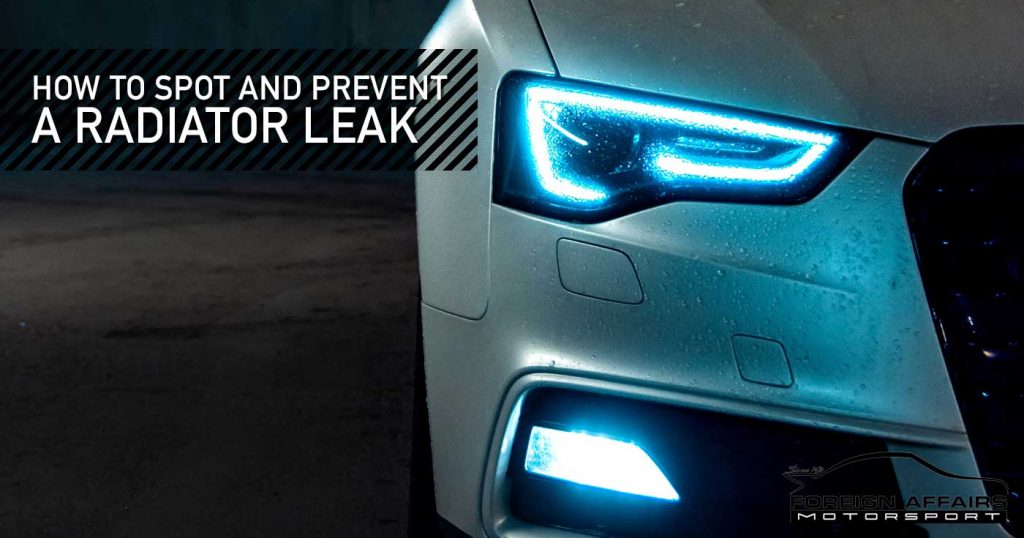How To Spot And Prevent A Radiator Leak

One of Hollywood’s signature cinema moves is to have a car break down by overheating and having a blast of steam blow out from under the hood. Unfortunately, this reality can happen to anyone. The best way to prevent getting stranded on the side of the road is to ensure you take proper care of your car’s coolant system and spot any leaks early.
What Causes Radiator Leaks?
If your car is overheating, it’s always good to rule to make sure you don’t have a faulty water pump. If your pump is fine, your most likely have a coolant leak.
The majority of radiator leaks are caused by aging coolant hoses. Coolant hoses are made either rubber or silicone. With age and repeat exposure to the heat of an engine, coolant hoses can begin to become brittle and crack, which allows coolant to leak out. In some cases, the cracks are so severe, or the heat has caused the hoses to expand so much that they free themselves from their connection. This causes coolant to rush out of the system.
The second most common cause of radiator leaks is the use of incorrect coolant. Some people think that regular water will suffice as a coolant in the radiator, but this couldn’t be more wrong. Regular water from a faucet contains impurities, and when the water is heated it causes the impurities to build-up sediment on the inside of your radiator and engine. Over time this causes these parts to rust. A large enough sediment build-up will also cause blockages that prevent the coolant from flowing.
The last of the common causes of radiator leaks is a bad radiator cap. Radiator caps are designed to seal tighter as more pressure is added on them. A failed radiator cap will allow the coolant to escape from the radiator.
Identifying a Leak
The easiest way to spot a leak is by starting the engine and letting it reach operating temperature. Once at operating temperature, leave the car to idle and check the engine from under the hood and underneath the car. If you see any coolant dripping out or spraying around the engine and radiator, you most likely have a leak.
Don’t forget to check all the coolant hoses, the hoses leading towards the coolant over the tank and the overflow tank itself for cracks and leaks.
Another method is when your car has been standing for a few hours, take a flashlight and inspect the radiator and engine for white sediment deposits or rust stains, as this will indicate leaks that have evaporated. With the engine cold, you can remove the radiator cap and inspect it for sediment build up and damage. While the cap is off, feel the inside of the radiator. You should be able to feel wetness.
Preventing Radiator Leaks
Servicing your car is important. While there are plenty of service myths, having your vehicle fully inspected is not one of them. Check your owner’s manual for how the manufacturer recommends your coolant be changed, but should you want to air on the side of caution, every 30,000 miles or three years is a safe interval. When changing coolant make sure you use the correct coolant or antifreeze as these have been designed to limit sediment build up in the system.
Luckily in Florida, we don’t experience freezing temperatures, so using distilled water is acceptable. While your mechanic is changing your fluids, request that they also test your radiator cap to ensure it’s holding the correct pressure.
The rubber inside your engine bay, coolant hoses, and belts have a lifespan of about five years before they begin to crack. It’s still recommended that you can have the coolant hoses inspected at every service, as road debris and variations in temperature can cause premature cracking.
If your car is leaking and you can’t seem to find the problem, our performance shop pro’s will be happy to help you diagnose and repair the issue. For all your European car needs, look no further than Foreign Affairs Motorsport – South Florida’s Premier German Auto Repair, Performance & Race Facility Since 1978.



